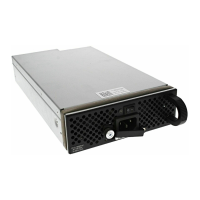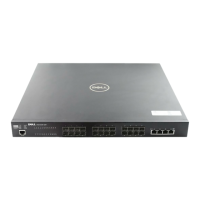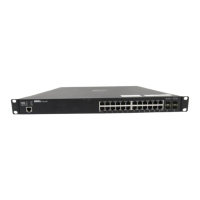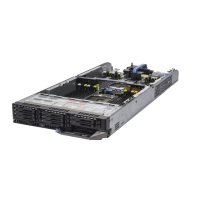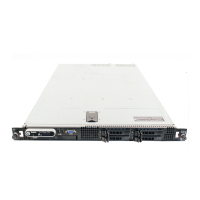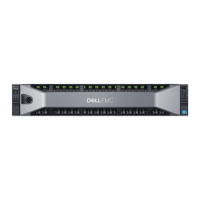426 | Open Shortest Path First (OSPFv2)
www.dell.com | support.dell.com
Command
History
Usage
Information
This command is useful in isolating routing problems between OSPF and RTM. For example, if a route
is missing from the RTM/FIB but is visible from the display output of this command, then likely the
problem is with downloading the route to the RTM.
This command has the following limitations:
• The display output is sorted by prefixes; intra-area ECMP routes are not displayed together.
• For Type 2 external routes, type1 cost is not displayed.
Example
Figure 21-16. show ip ospf process-id routes Command Example
show ip ospf statistics
Display OSPF statistics.
Syntax
show ip ospf process-id statistics global | [interface name {neighbor router-id}]
Parameters
Defaults
none
Command Modes
EXEC
EXEC Privilege
Version 8.3.16.1 Introduced on MXL 10/40GbE Switch IO Module
FTOS#show ip ospf 100 route
Prefix Cost Nexthop Interface Area Type
1.1.1.1 1 0.0.0.0 Lo 0 0 Intra-Area
3.3.3.3 2 13.0.0.3 TenGig 0/47 1 Intra-Area
13.0.0.0 1 0.0.0.0 TenGig 0/47 0 Intra-Area
150.150.150.0 2 13.0.0.3 TenGig 0/47 - External
172.30.1.0 2 13.0.0.3 TenGig 0/47 1 Intra-Area
FTOS#
process-id
Enter the OSPF Process ID to show a specific process.
If no Process ID is entered, command applies only to the first OSPF process.
global Enter the keyword global to display the packet counts received on all running
OSPF interfaces and packet counts received and transmitted by all OSPF
neighbors.
interface name
(OPTIONAL) Enter the keyword interface followed by one of the following
interface keywords and slot/port or number information:
• For Port Channel groups, enter the keyword
port-channel followed by a
number:
Range: 1-128
• For a 10-Gigabit Ethernet interface, enter the keyword
TenGigabitEthernet followed by the slot/port information.
• For a VLAN, enter the keyword
vlan followed by a number from 1 to 4094.
• For a 40-Gigabit Ethernet interface, enter the keyword
fortyGigE followed
by the slot/port information.
neighbor router-id
(OPTIONAL) Enter the keyword neighbor followed by the neighbor’s
router-id in dotted decimal format (A.B.C.D.).
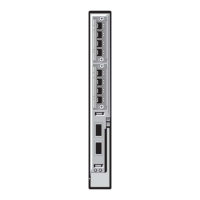
